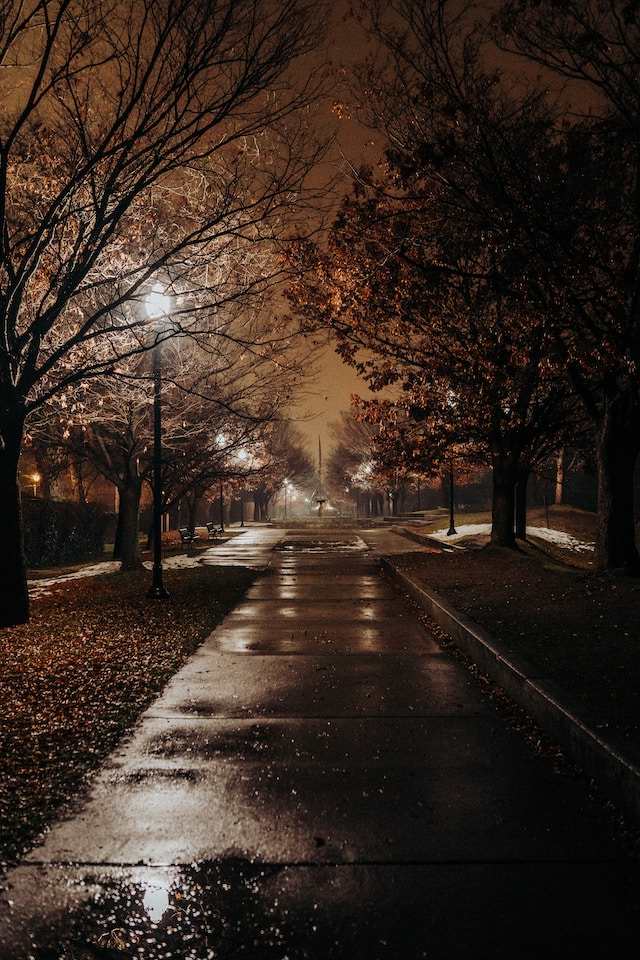The dynamic and recognizable capital of the United Kingdom, London, is known for its extensive history, wide range of cultural influences, and beautiful natural surroundings.
However, the noteworthy rainfall in London is one feature that frequently commands attention in discussions about the city’s weather.
Since there is a lot of rain in the city all year long, many people are curious as to why London gets so much rain.
To shed light on the science underlying this natural phenomenon, this article explores the intricate meteorological aspects that contribute to London as a rainy city.
Contents
Why Is There So Much Rain In London?
Due to a confluence of physical, meteorological, and climatic factors, London experiences a significant amount of rainfall. Let’s examine the principal causes of the city’s reputation for frequent rainfall:
- Geographical Location
London is near the North Atlantic Ocean, due to its location along the southeast coast of the United Kingdom.
Due to its geographic location, the city is exposed to humid air masses coming from the Atlantic that are highly moist.
- Prevailing Wind Patterns
In the UK, the southwest is where most winds originate. When moving through the higher ground to the west of London, such as the Welsh mountains, moist air masses from the Atlantic Ocean are compelled to rise.

As a result of the air being cooled during the climb, condensation, and rain clouds are formed.
- Moisture Source
London’s weather systems frequently receive moisture from the adjacent North Atlantic Ocean.
Predominant winds then carry the water vapor from the atmosphere toward London and the nearby locations as the warm seawater evaporates.
- Topography
The Chiltern Hills and the North Downs, which are elevated areas close to London, facilitate the lifting of moist air masses.
These air masses are raised higher as they come into contact with the higher terrain, which causes more cooling and condensation, which produces rain.
- Urban Heat Island Effect
The city’s metropolitan setting interestingly impacts rainfall in London. Buildings and other city infrastructure trap heat in specific areas of the city.
As a result of this warmth, air may rise to higher altitudes where it cools and condenses to create clouds, which may eventually produce rain.
- Seasonal Variability
Rainfall in London is higher in the autumn and winter months than in the summer. This is governed by the position of the jet stream, a high-altitude air movement that controls weather systems.
During the cooler months, the jet stream moves further south, directing more rain-bearing weather systems toward the UK.
- Climate Change
While the degree of climate change’s impact on London’s rainfall is still being explored, shifting global climate patterns can contribute to more irregular and intense weather events, potentially resulting in higher rainfall at times.
How To Avoid Rain In London?
If you’re going to London, you should be prepared for the rain. Here are some suggestions to help you stay dry:
- Pack a rain jacket or umbrella
Staying dry in London requires a high-quality waterproof jacket or umbrella. Make sure to get an effective one that can handle windy situations.
- Wear waterproof shoes or boots
Wet feet may quickly ruin a day of sightseeing, so make sure you dress appropriately. Open-toed shoes should be avoided because they will soon become soaked.

- prepare some indoor activities if the weather is extremely terrible
If the weather is particularly bad, prepare some indoor activities to keep you dry. There are numerous museums, art galleries, and other indoor attractions to see in London.
What Effect Does Rain Have On Everyone’s Lives In London?
London’s abundant rainfall has a huge impact on the lives of its citizens, the city’s infrastructure, and the city’s entire way of life.
Here are some of the most significant effects of rain on everyone’s lives in London:
- Commuting and Transportation
Rain frequently causes wet and slippery roads, resulting in traffic congestion and longer commuting times.
Public transit may be impacted as well, with delays and disruptions to services such as buses, trains, and underground tube systems.
- Urban Infrastructure
The city’s infrastructure, which includes roads, bridges, and drainage systems, is built to withstand a particular amount of rain.
Heavy and continuous rain can overwhelm these systems, resulting in floods, transportation problems, and, in extreme circumstances, property damage.
- Outdoor Activities and Recreation
Rain can make outdoor activities and recreational options more limited. Parks, gardens, and outdoor events are frequently canceled or have low attendance owing to adverse weather.
This can have an impact on social relationships as well as the general quality of life.
- Mental Health and Mood
Long durations of rain can affect people’s moods and mental health. Lack of sunlight and dark sky can cause depression and potentially contribute to diseases such as Seasonal Affective Disorder (SAD).
- Health and Safety
Rain can make sidewalks and roads slippery, increasing the danger of accidents and injury. Wet weather may also lead to a rise in colds and other problems when people spend more time indoors in close quarters.
- Work Productivity
Rainy weather can have an impact on workplace productivity since transportation delays and disruptions might cause employees to come late or miss work entirely.
Consistent rainfall can have a substantial impact on outdoor businesses such as construction and agriculture.
- Housing and Infrastructure Maintenance
Frequent rain can cause moisture problems in structures, resulting in mold growth and structural damage.

Maintaining homes and infrastructure to resist wet weather becomes an important part of city planning and management.
- Drainage and Flooding
Heavy rains can be difficult to manage in London’s urban environment, resulting in localized flooding. This endangers properties, transit systems, and public places, resulting in higher cleanup and repair expenses.
- Water Supply and Conservation
Rainfall also contributes to the restoration of water sources and the maintenance of the city’s water supply. Adequate rainfall is required to keep water reservoirs healthy, especially during the dry months.
- Cultural and Social Activities
Rain can have an impact on cultural and social activities, such as festival attendance, outdoor market attendance, and other public meetings. It might also affect plans for outdoor dining and entertainment.
- Biodiversity and Green Spaces
Rain, on the other hand, helps London’s famed greenery. Because of the dampness, parks, gardens, and other green spaces thrive, promoting urban biodiversity and providing entertainment opportunities for people.

